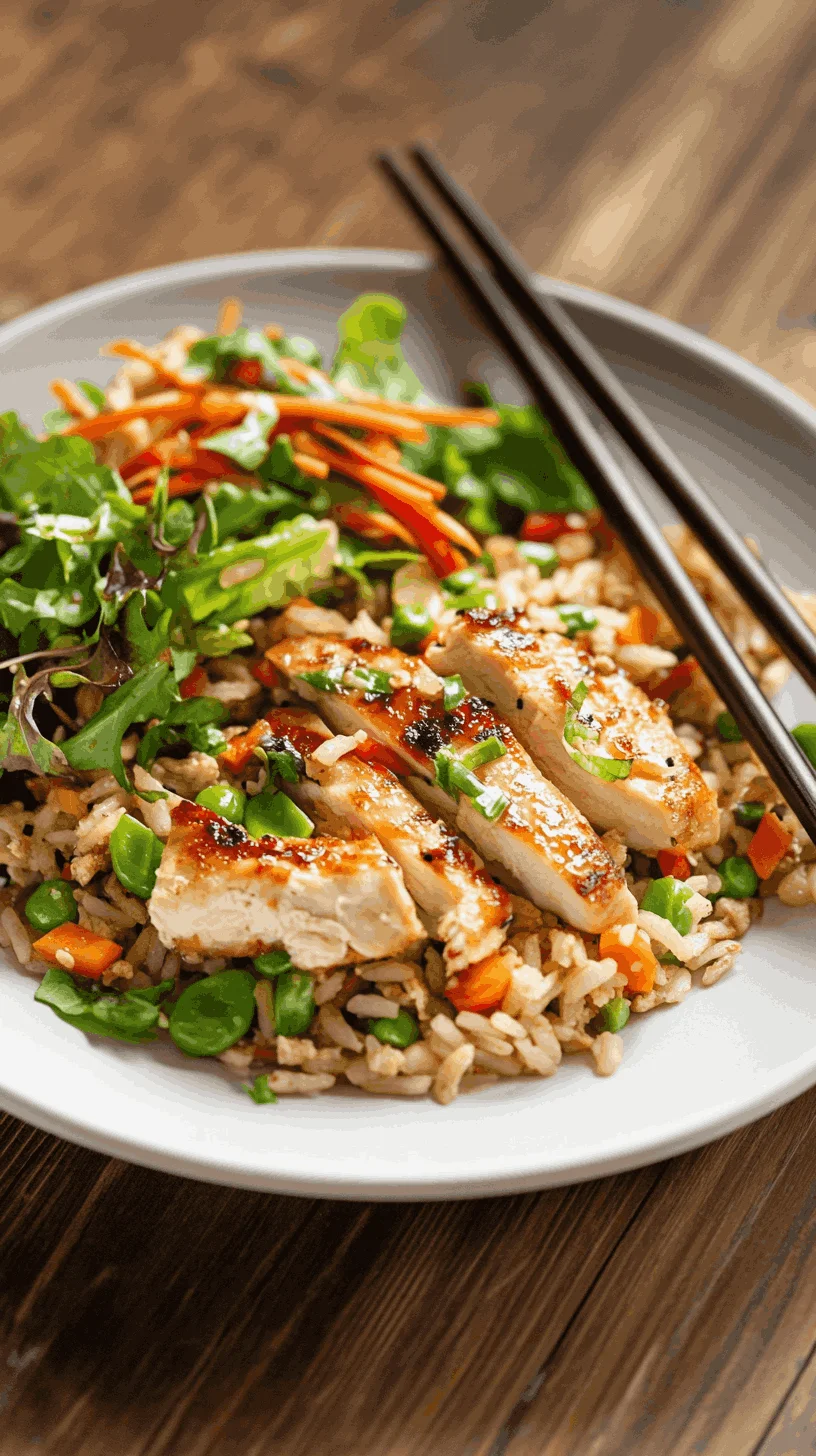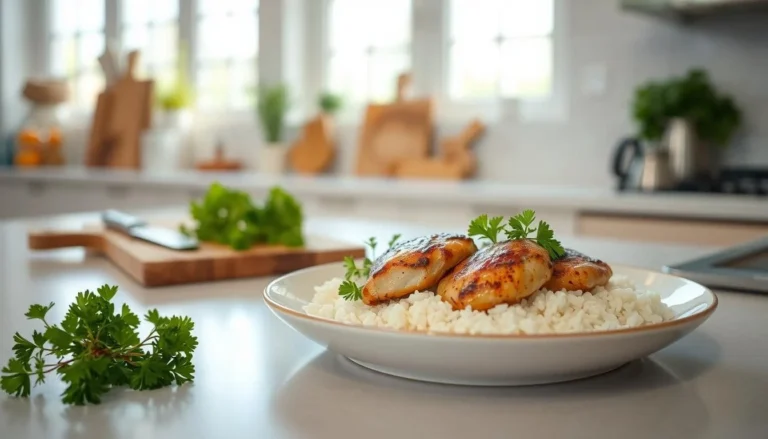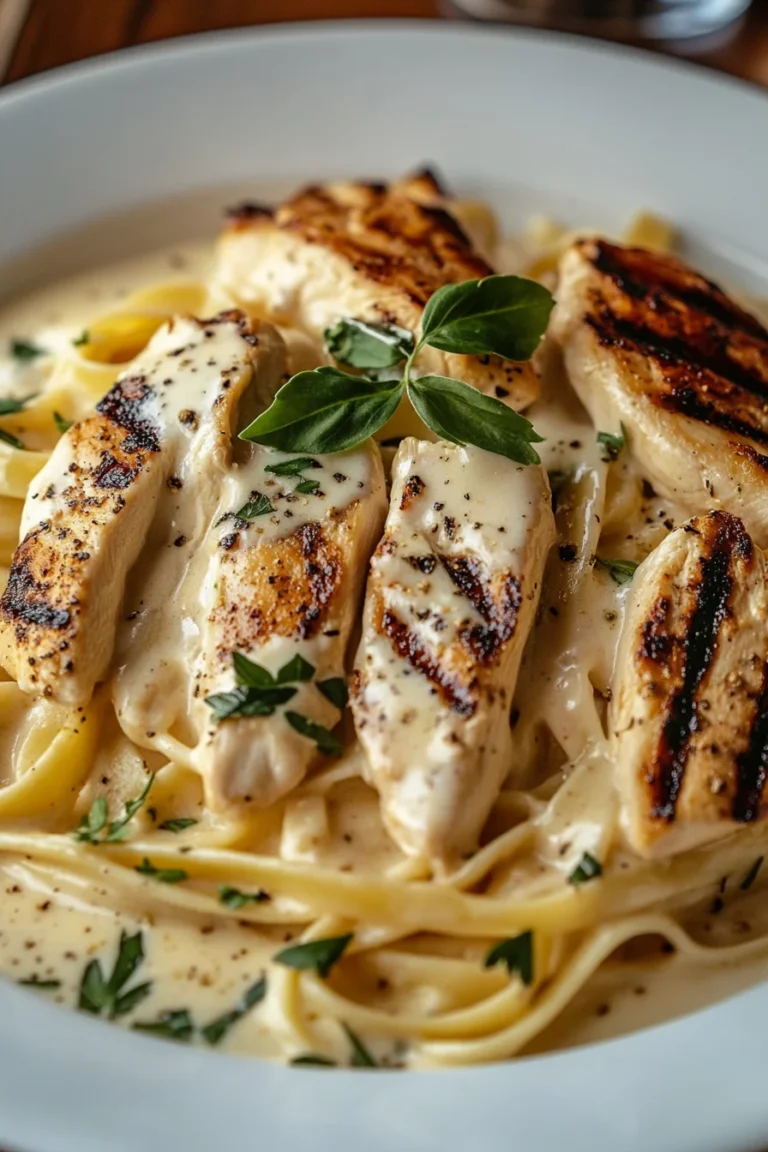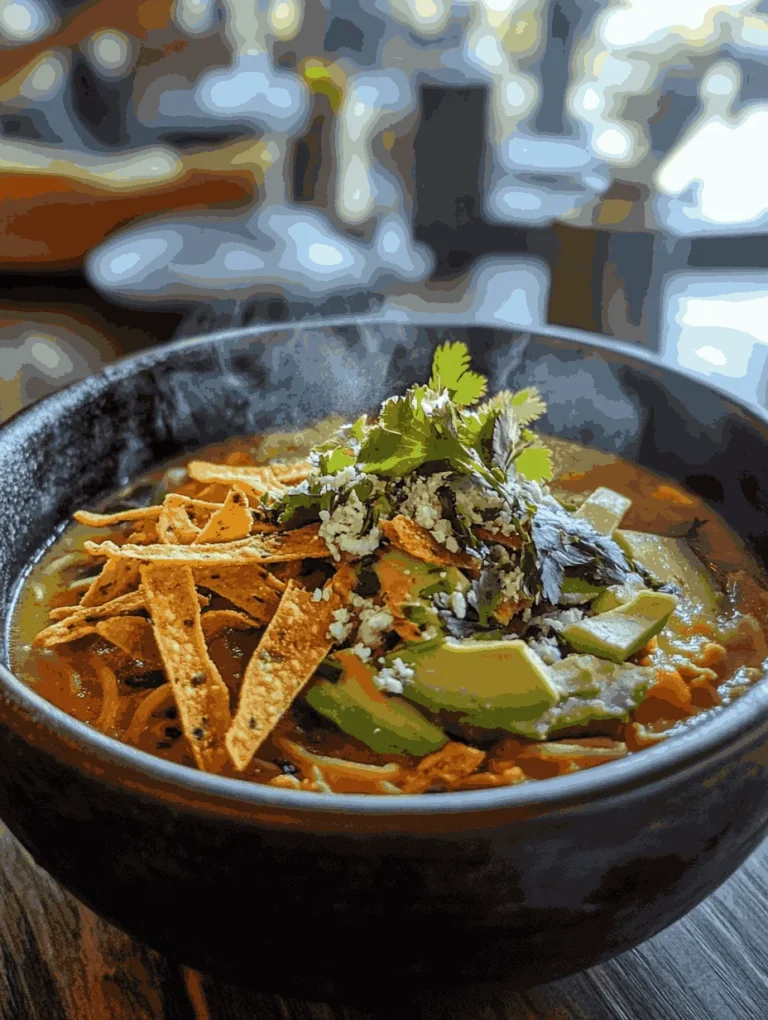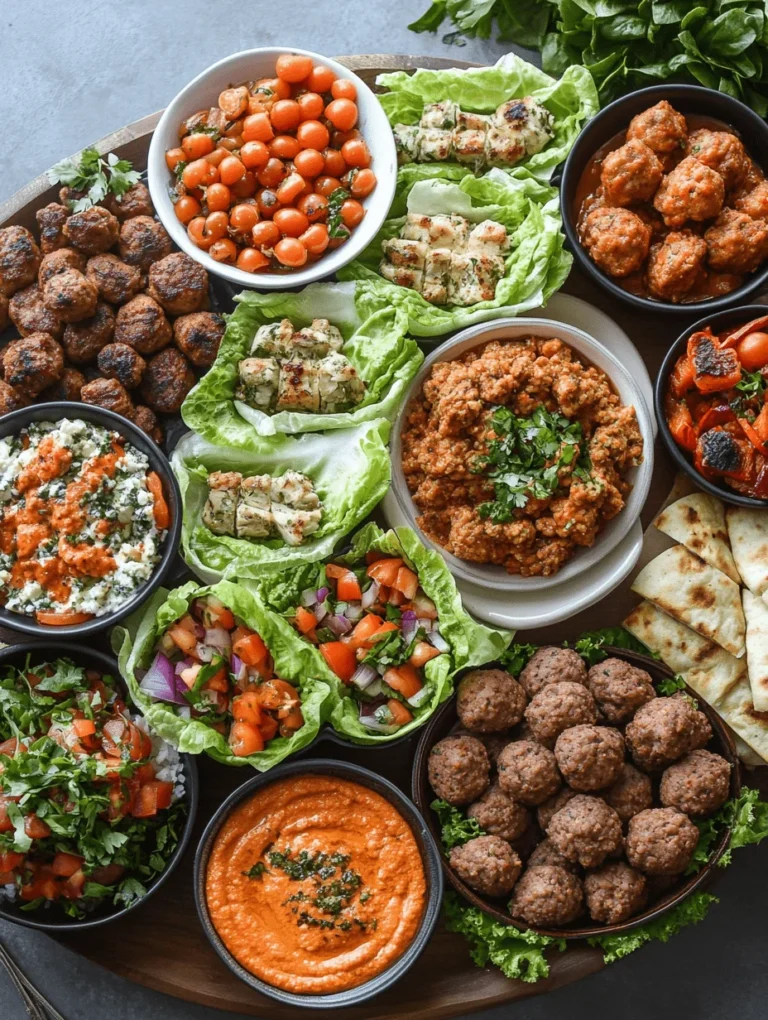Is Chicken Fried Rice Healthy? How to Enjoy It Guilt-Free at Home
Table of Contents
Chicken fried rice is one of those comfort foods that brings a smile after a long day. The savory aroma, the tender chicken, the fluffy rice it’s a favorite for many. But have you ever wondered, is chicken fried rice actually healthy?
The truth is, it depends. Traditional takeout versions can be high in sodium, oils, and refined carbs. But when made at home with a few simple swaps, chicken fried rice can be a balanced, nourishing meal that’s quick and satisfying.
In this guide, we’ll dive into the nutritional facts, potential concerns, and easy tips for creating a healthier version right in your own kitchen. Let’s get started!
Key Takeaways
- Traditional restaurant versions typically contain higher sodium and oil content than homemade alternatives.
- The dish combines protein, carbohydrates, and vegetables in a single meal.
- Cooking methods significantly impact the overall nutritional profile.
- Homemade versions can be modified to increase nutritional benefits.
- Portion size plays a crucial role in determining the healthfulness of this dish.
- The balance of ingredients affects the overall nutritional value.
Nutritional Profile of Chicken Fried Rice
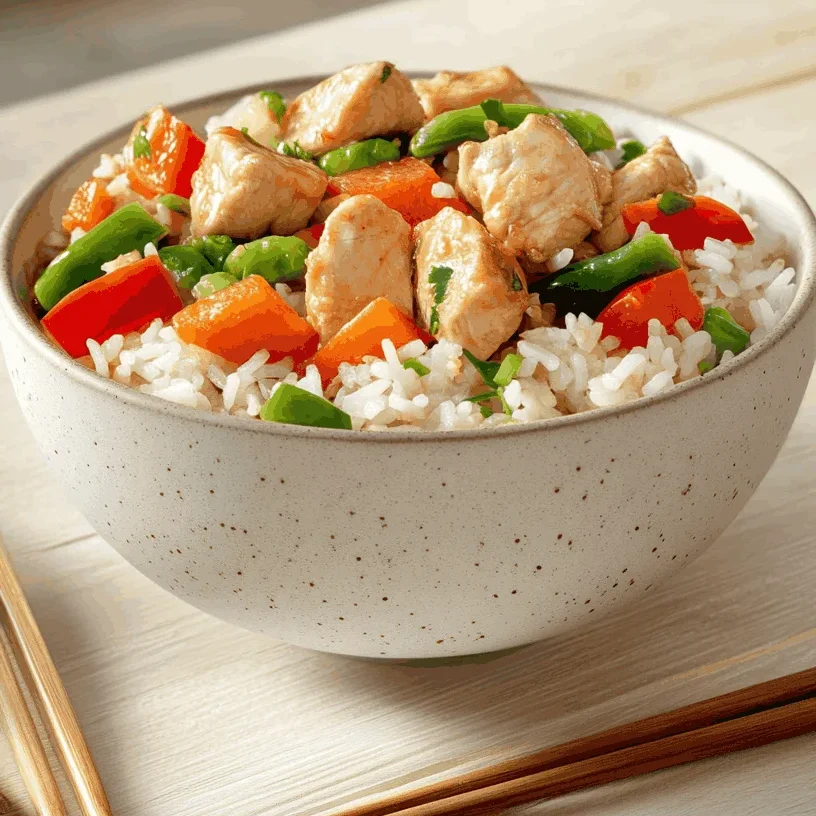
The nutritional value of chicken fried rice changes a lot based on how it’s made and what’s in it. Eating it at a restaurant versus making it at home gives you two very different meals. Knowing these differences helps you choose healthier options.
Calorie and Macronutrient Breakdown
A homemade serving of chicken fried rice has about 357 calories. It’s a meal with a good mix of carbs, protein, and fat you get 47.9g of carbs, 25g of protein, and 8.6g of fat.
Restaurant versions? Expect 500–600 calories per serving, thanks to extra oil and larger portions.
Key Vitamins and Minerals
Chicken fried rice isn’t just carbs and protein. Thanks to veggies like peas, carrots, and bell peppers, it’s a great source of Vitamin C and Vitamin A both crucial for immune support and eye health.
You’ll also find iron (great for oxygen transport), potassium (essential for fluid balance), and a bit of calcium for bone health.
⚡ Heads up: Restaurant versions often exceed 1000mg of sodium per serving so homemade is your best bet for controlling salt.
Protein Content from Chicken
One of the biggest nutritional wins in chicken fried rice is the chicken itself, offering 20–25g of complete protein per serving. Learn more about the health benefits of chicken and rice to see why this combination is a powerhouse!.
Vegetable Nutrients and Fiber
Peas, carrots, spinach, and bell peppers add fiber, vitamins, and antioxidants. Homemade versions can pack 8–9g of fiber per serving, helping digestion and keeping you fuller longer.
Rice as a Source of Energy
Rice provides complex carbs for lasting energy. Swapping white rice for brown rice boosts your meal’s fiber, B vitamins, magnesium, and selenium and keeps blood sugar levels more stable.
| Component | Key Nutrients | Health Benefits | Optimal Choices |
|---|---|---|---|
| Chicken | Protein, B vitamins, zinc | Muscle repair, immune support | Skinless chicken breast |
| Vegetables | Fiber, vitamins A & C, antioxidants | Digestive and immune health | Colorful variety (carrots, peas, peppers) |
| Rice | Complex carbs, B vitamins, magnesium | Sustained energy, brain function | Brown rice or cauliflower rice |
| Eggs (optional) | Protein, choline, lutein | Brain health, eye protection | Whole eggs in moderation |
Potential Health Concerns with Traditional Chicken Fried Rice
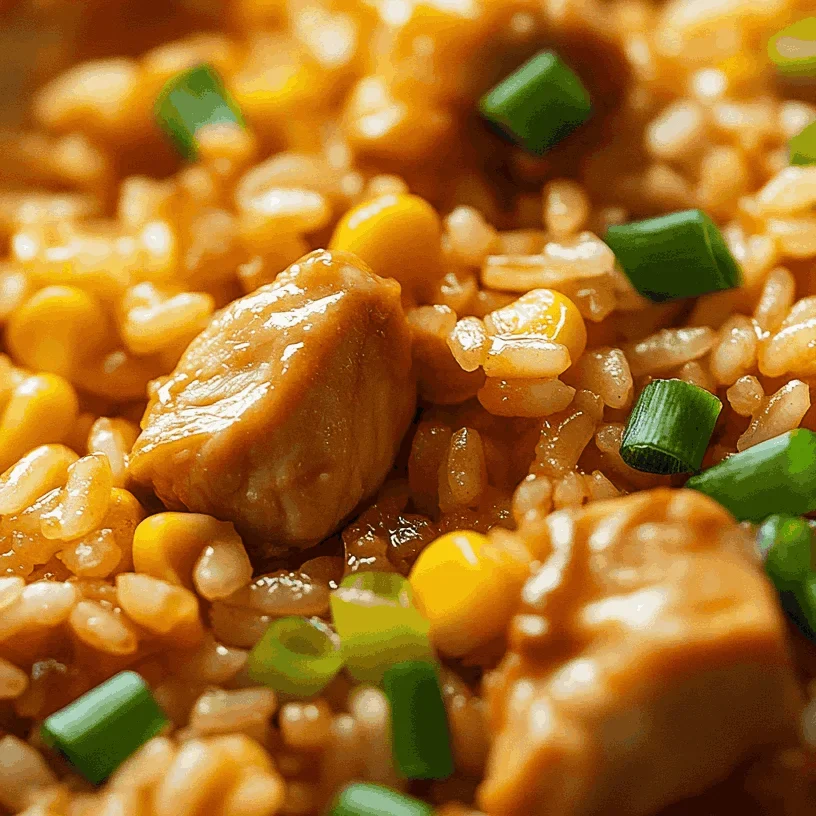
Sodium and MSG Content
Restaurant chicken fried rice can easily pack 700–1000mg of sodium. Soy sauce, MSG, and added salt contribute to high blood pressure risks and bloating for some individuals.
Oil and Fat Considerations
Stir-frying with heavy amounts of vegetable oil can add 15–20g of fat per portion, raising the calorie count without adding much nutrition.
Refined Carbohydrates and Glycemic Index
White rice has a high glycemic index, causing quick blood sugar spikes leading to energy crashes and increased hunger later. For those managing blood sugar, this can be a real concern.
Creating Healthier Chicken Fried Rice at Home
The good news? You can easily make a healthier version at home!
Best Ingredient Substitutions
- Rice: Choose brown rice or cauliflower rice for added fiber and fewer carbs.
- Protein: Choose lean cuts consider easy shredded chicken recipes for quick healthy options
- Vegetables: Double or even triple the amount think broccoli, bell peppers, spinach, mushrooms!
Cooking Methods to Reduce Fat
- Use a non-stick skillet with cooking spray instead of pouring oil.
- Stir-fry over high heat quickly to lock in flavor without soaking in fat.
- Finish with a few drops of sesame oil instead of using it to fry.
Balanced Portion Recommendations
A balanced plate might look like:
- 1 cup cooked brown rice
- 3–4 oz chicken
- 1–2 cups assorted vegetables
Pair it with a broth-based soup or side salad to round out your meal!
| Component | Traditional Version | Healthier Alternative | Nutritional Improvement |
|---|---|---|---|
| Rice Base | White rice | Brown rice or cauliflower rice | Increased fiber, reduced calories |
| Protein | Mixed cuts of chicken | Skinless chicken breast | Lower saturated fat, higher protein ratio |
| Cooking Fat | Liberal vegetable or peanut oil | Measured healthy oil or spray | Reduced total fat and calories |
| Vegetable Content | Minimal (peas, carrots) | Abundant and varied vegetables | Increased vitamins, minerals, and fiber |
Conclusion: Making Informed Choices About Chicken Fried Rice
Is chicken fried rice healthy?
It definitely can be when you take control of the ingredients and cooking methods!
Homemade versions give you the power to limit sodium, use healthier oils, and pack your plate with colorful vegetables and lean protein. don’t miss exploring some of the healthy crockpot chicken recipes you can enjoy any day. It’s all about balance, smart choices, and a little creativity. If you’re looking for more hearty chicken-based meals, check out a delicious chicken dressing recipe or try an easy homemade chicken and dressing
So go ahead, grab your wok, toss in those veggies, and make your own healthier version of this classic comfort dish. Your body and your tastebuds will thank you.Need even more meal inspiration? Browse through the best healthy magic recipes for your next nutritious creation!
FAQ
How many calories are in a typical serving of chicken fried rice?
Between 350 and 600 calories, depending on preparation and portion size.
Is chicken fried rice good for weight loss?
Yes, if made at home with brown rice, lean chicken, lots of vegetables, and minimal oil.
What are the best vegetables to add?
Broccoli, bell peppers, spinach, carrots, edamame — all colorful, fiber-rich choices.
How does restaurant chicken fried rice compare to homemade?
Restaurant versions tend to be higher in sodium, fat, and refined carbs. Homemade is healthier.
What’s the best rice to use?
Brown rice is best for fiber and nutrients. Cauliflower rice is great for low-carb options.
How can I reduce sodium?
Use low-sodium soy sauce or coconut aminos, and season with herbs and fresh garlic or ginger.
Is chicken fried rice high in protein?
Yes especially when using skinless chicken breast and adding an optional egg.
What are the benefits of using brown rice?
More fiber, lower glycemic impact, and higher amounts of important nutrients like magnesium and B vitamins.
How can I make it more filling without extra calories?
Add lots of non-starchy vegetables, use brown rice, and serve with a side salad or broth-based soup.
Did You Try Our Recipes?
There are no reviews yet. Be the first one to write one.

